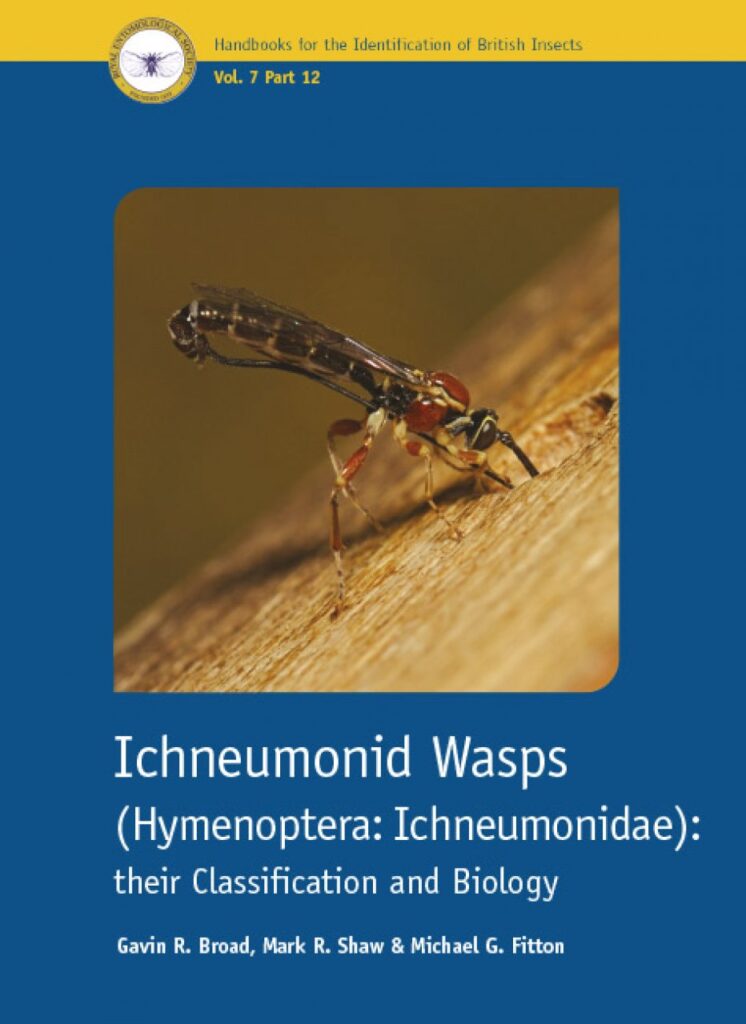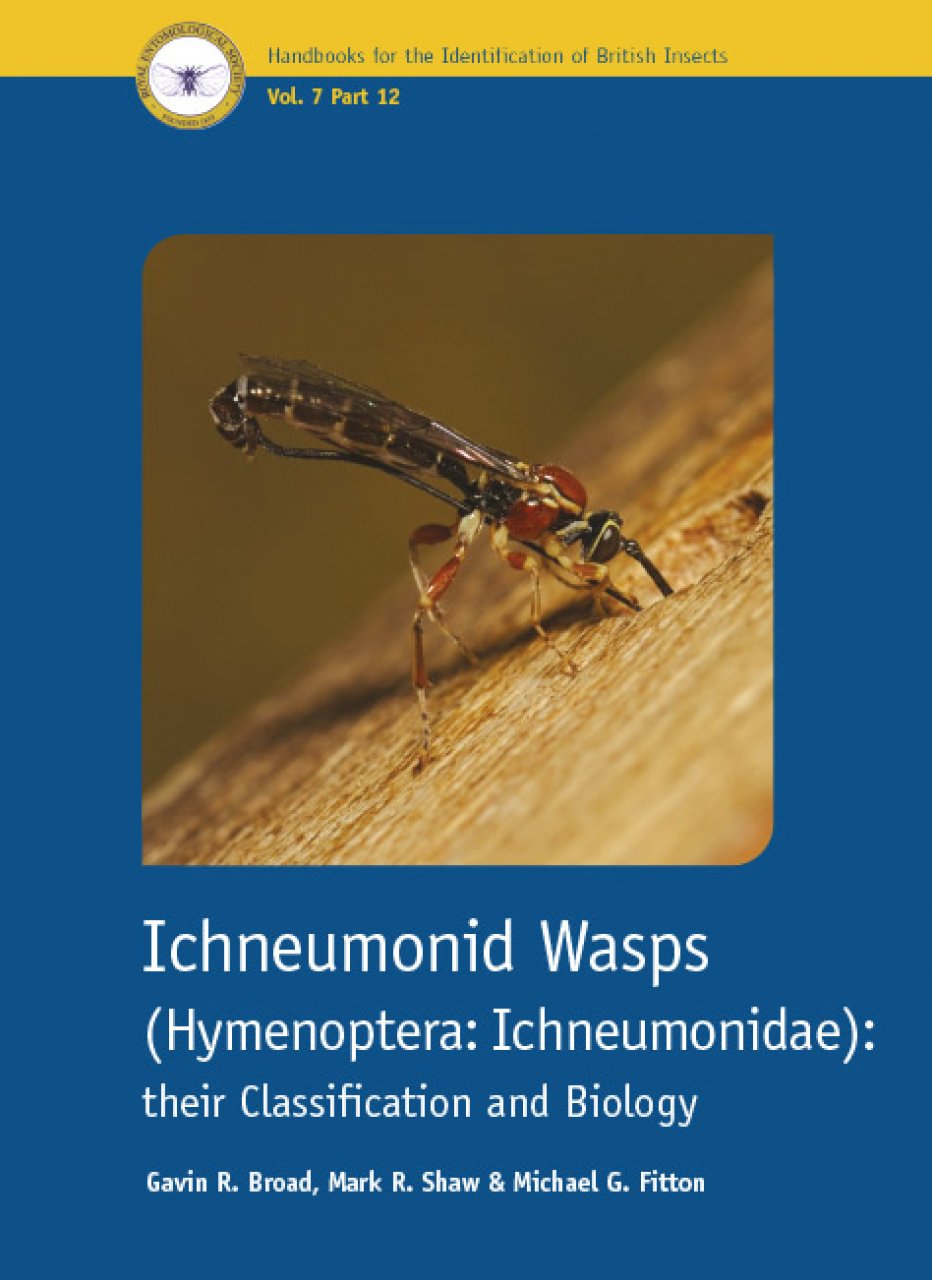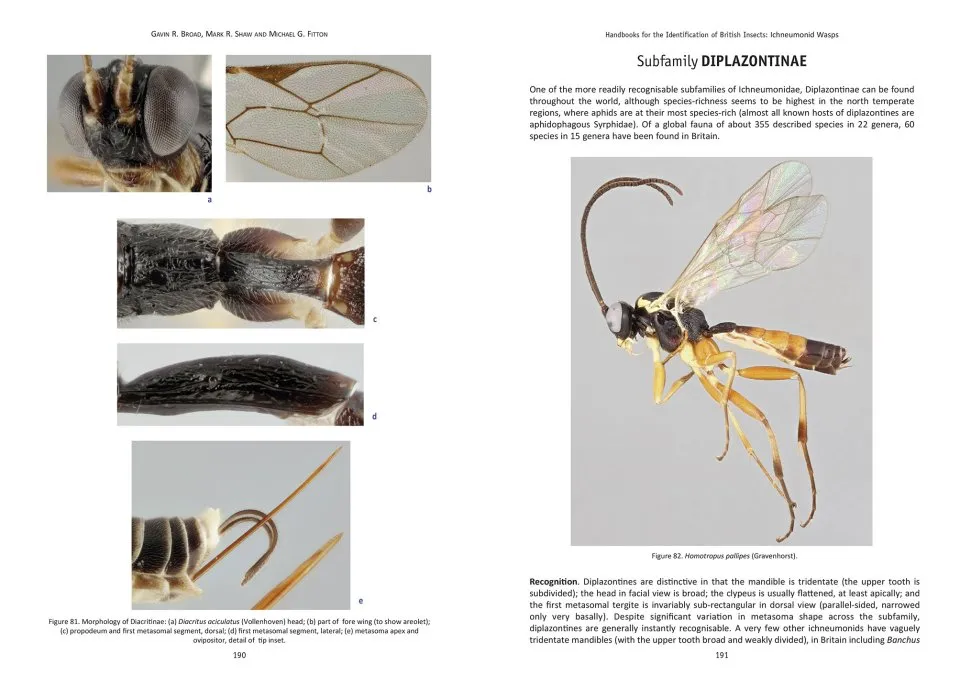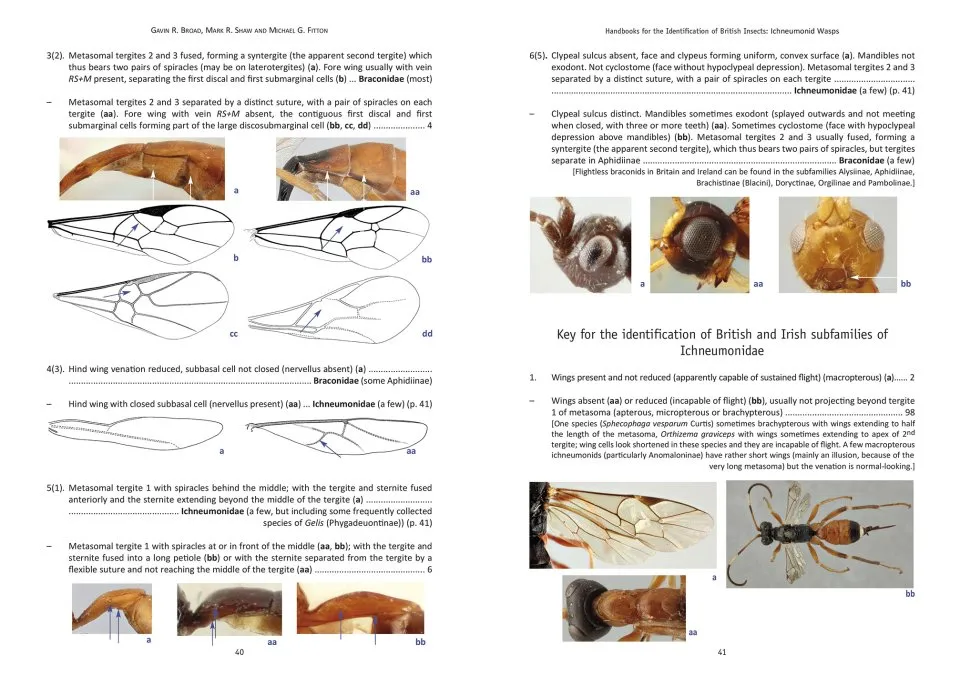For those unfamiliar with this fascinating group of insects, a book that merely allows the identification of the subfamilies within a single family might sound rather limited. Those ‘in the know’, however, will immediately appreciate that this volume has the potential to unlock a huge treasure chest of species that have the reputation for being ‘impossible’ to identify. Comprising between 2,300 and 2,500 species (depending on which part of the book one refers to), this family presents a veritable cornucopia of species, lifestyles and ecological relationships to study: nearly one in every ten British insect species is an ichneumon wasp. The ability to study the group has traditionally been limited by the lack of up-to-date aids to identification, allied to a rather fluid taxonomy as our knowledge has evolved.
This is very much more than just an identification guide. The majority of the book comprises accounts for each of the 35 subfamilies recorded from the British Isles, plus one further subfamily that might reasonably be expected to occur here. Each chapter details identification features and reviews taxonomic status and known biology (host associations, developmental biology, life history and use as agents for biological control). In addition, and of huge value, a summary of known literature is provided, which might allow one to take identification to genus or even species, provided that the relevant publications can be accessed. It should be remembered, however, that for very many species full identification remains a challenge. The six remaining subfamilies found elsewhere in the world are summarised in less detail.
View this book on the NHBS website
Advice is given on how to prepare and mount specimens, including useful tips for particular pinning and card-point techniques that will allow you to get the best out of your specimen. I was surprised to learn that, at this level, opened mouth parts and extracted genitalia are rarely required for identification, although one suspects that this may be needed at later stages in the process, so I would be tempted to do it before the specimen dries. The terminology of the body parts will be broadly familiar to anyone previously acquainted with other Hymenoptera, but all these features and many more besides are clearly illustrated in a preliminary chapter with copious line drawings.
These include details of mandible types and ovipositor tips, and also very useful drawings of the types of cuticle microsculpture, so that one can differentiate with confidence between punctate reticulate and reticulate rugose!
The starting point in the identification process is that one has a specimen within the superfamily Ichneumonoidea. A preliminary key, supported by detailed text elsewhere in the book, then allows for the separation of the two extant families, Braconidae and Ichneumonidae. Both this preliminary key and the main key to ichneumonid subfamilies are richly illustrated with close-up stacked photographs. These are generally clear, although a few might have benefited from explanatory annotations and others are a little dark, but it is never easy to photograph black insects! A few line-drawings might have been helpful in these instances, but the main key relies totally upon photographs.
The subfamily key runs to 100 couplets, which, at first glance, seems a lot for a device that separates only 30-odd subfamilies. This is, however, designed to simplify the identification process, as the subfamilies are defined largely by combinations of characters that occur in complex permutations. This has to a great extent allowed the authors to avoid the unwieldy ‘if… then’ conditional couplets that bedevilled earlier keys, which attempted to determine subfamilies in a single couplet. A few such ‘ifs’ remain, but the couplets are clearly and concisely written and such caveats are used in combination with other, clear-cut features. Another advantage is that, as a result of this approach, one has often started the process of identification to genus, or a small group of genera, as indicated in the text of the key.
The key relies heavily on quite easily visible characters, such as wing venation, mandible type, cuticle sculpturing, facial features and antennae, but one will sometimes need to search for more subtle features, such as the presence or absence of bristles, ovipositor shape and length of mouthparts. For most couplets, however, several distinct features are compared, so it may not be a show-stopping disaster if, for example, you really cannot tell whether or not the maxillary palps reach beyond the fore coxae.
All in all – and perhaps the acid test of any such book – I am inspired to ‘give them a go’ next summer, no longer fearful ichneumonids can be done only by a handful of experts. They are still, of course, a difficult group to identify to species level, but this book will surely inspire many more naturalists to pay more attention to these insects. This can only be a good thing: as the authors point out, knowledge of the conservation status of ichneumonids is at a primitive level compared with other Hymenoptera. Given their high degree of specialisation, many species of ichneumon are likely to be genuinely scarce or rare and the first step towards increasing our understanding of their distribution, abundance and ecological requirements is, of course, to put a name to those that we find.




